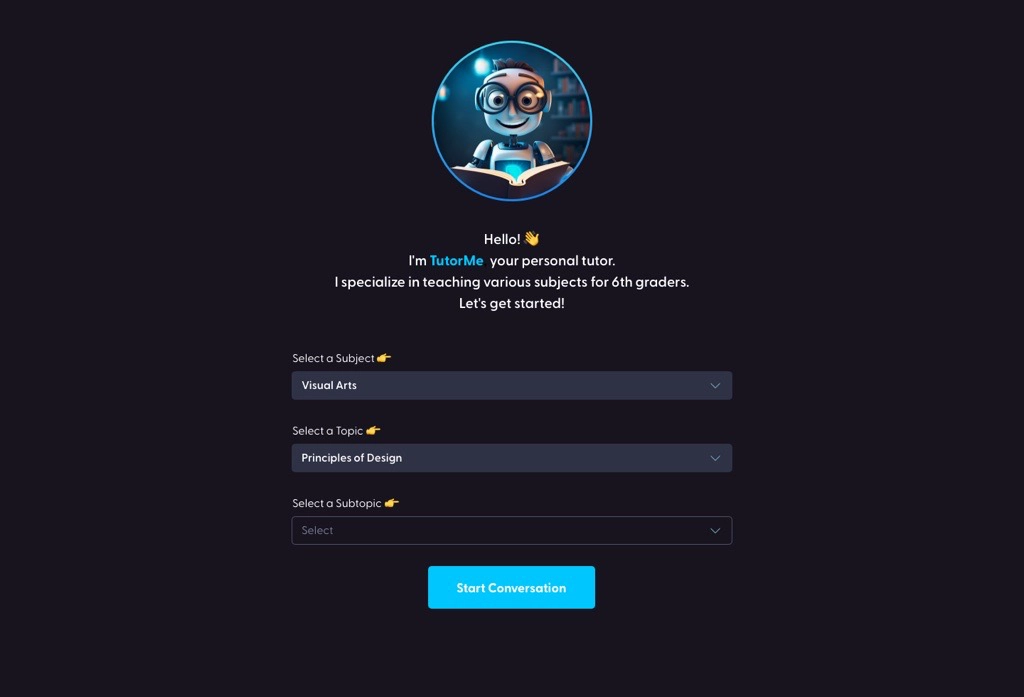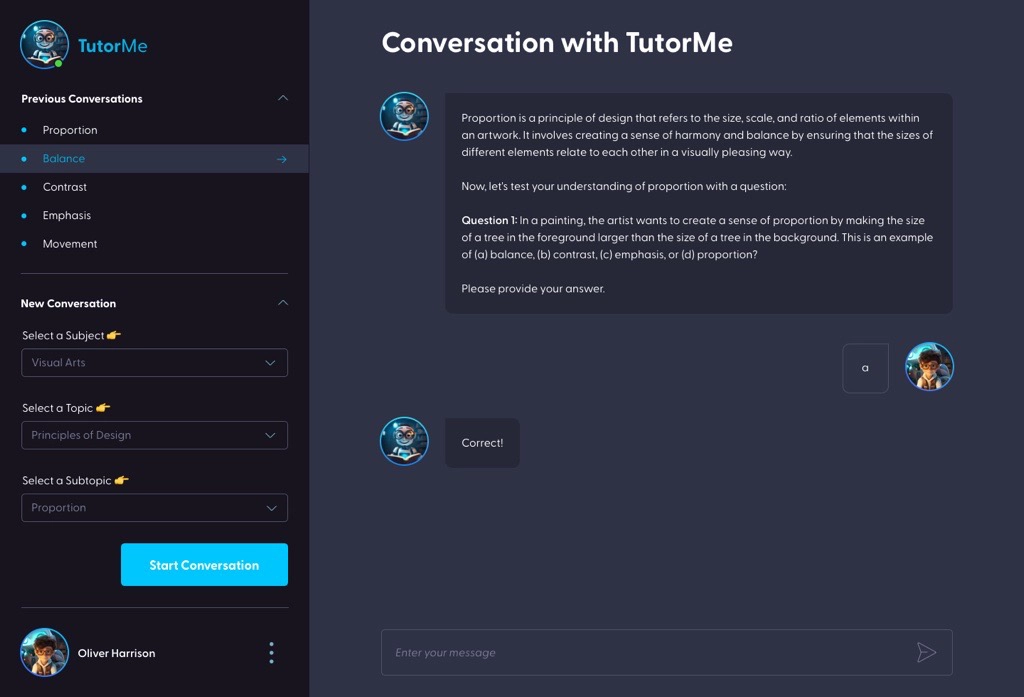-
Contents
- The Potential of Generative AI
- Reaping the Benefits of AI Virtual Tutor
- Navigating Implementation Challenges
- The Creation of AI Virtual Tutor – Our Journey
- Looking Towards a Bright Future
- FAQs

The Potential of Generative AI
The power of AI Virtual Tutor lies largely in the application of Generative AI, a groundbreaking variant of artificial intelligence technology. Differing from conventional rule-based AI, Generative AI is characterized by its ability to understand, learn, and create new content based on its training data. This key ability to generate novel content that resembles the learned data is what empowers AI Virtual Tutor, enabling it to produce diverse, accurate, and contextually relevant responses, and thereby enriching the overall learning experience.
At its core, Generative AI is built upon complex machine learning models, specifically deep learning models such as the transformer-based GPT-3 and GPT-4 models. These models are trained on vast amounts of text data, allowing them to learn the intricate patterns, semantics, and structures inherent in human language. This training enables the AI to understand the context behind an input and generate an appropriate response.
The training process itself involves sophisticated algorithms and methodologies. One such method is sequence-to-sequence learning, which involves training models to convert sequences from one domain (such as a question posed by a student) into sequences in another domain (like a detailed explanation or answer).
To enhance the capabilities of AI Virtual Tutor, the Generative AI must be meticulously trained and fine-tuned to ensure the generated responses are not only contextually accurate but also pedagogically sound. Advanced techniques like transfer learning, where pre-trained models are further trained on specific educational data, can be employed to achieve this.
Moreover, the Generative AI is also equipped with reinforcement learning techniques. This means the AI Virtual Tutor continuously learns from each interaction with a student, refining its understanding and improving its responses over time, effectively mimicking the process of a human tutor getting to know their student better with each tutoring session.
When Generative AI is deployed effectively, AI Virtual Tutor can go beyond merely regurgitating information. They can adapt to a student’s unique learning style, pace, and educational needs, providing personalized instruction that makes learning more engaging, relevant, and efficient. With Generative AI, the possibilities for transformative education are truly vast.
Reaping the Benefits of AI Virtual Tutor
AI Virtual Tutor, powered by Generative AI, has ushered in a new era in education, heralding a plethora of significant benefits that are transforming the landscape of learning.
One of the primary advantages of AI Virtual Tutor is its ability to offer truly personalized learning. Unlike traditional classroom settings where a one-size-fits-all approach often dominates, AI Virtual Tutor can adapt to each student’s unique learning pace, style, and understanding. They can identify the strengths and weaknesses of individual learners, customize the instruction accordingly, and thereby enhance the learning outcomes. This tailoring of educational content caters to the diverse learning needs of students, making education more inclusive and effective.
The flexibility and accessibility offered by AI Virtual Tutor represent another significant advantage. Traditional classroom constraints, both geographical and temporal, are effectively transcended by these AI-driven platforms. They ensure that high-quality educational resources are available to students 24/7, thus promoting learning continuity. The ability to learn anytime and from anywhere opens up new possibilities, particularly for learners located in remote areas or those who need to balance their studies with other commitments.
AI Virtual Tutor also fosters an encouraging learning environment. Their non-judgmental nature alleviates the pressure and fear of making mistakes, which often inhibit students’ willingness to ask questions in traditional classrooms. With the freedom to ask questions and make mistakes, students can engage more deeply with the learning material, further enhancing their understanding and retention of the subject matter.
Moreover, AI Virtual Tutor is scalable. It can simultaneously cater to a large number of students, providing personalized instruction to each one, something that would be incredibly challenging for a human tutor. This scalability makes AI Virtual Tutor a cost-effective solution, democratizing access to quality education.
Finally, AI Virtual Tutor is consistently up-to-date, given their ability to learn and update the knowledge continuously. This ensures that the educational content they deliver is always current, accurate, and relevant, contributing to a richer and more valuable learning experience.
In summary, AI Virtual Tutor is catalyzing a significant shift in the education sector, enhancing the learning experience with its unique capabilities. Its benefits are multifold, contributing not only to the individual progress of learners but also to the broader goal of making quality education accessible to all.
Navigating Implementation Challenges
While AI Virtual Tutor has the potential to revolutionize education, the road to successful implementation is not without its fair share of challenges. These challenges range from technical complexities to broader considerations, such as data privacy and the need to integrate with traditional education systems.
The technical challenge extends to the implementation of adaptive learning methodologies. This involves developing intelligent systems capable of tracking and analyzing student progress, identifying their learning gaps, and adapting the instructional content accordingly. All these processes require sophisticated algorithms, extensive computational resources, and a deep understanding of both educational pedagogies and AI technologies.
Beyond the technical aspects, implementing AI Virtual Tutor involves navigating data privacy considerations. Given that this system often involve processing sensitive data, including personal information of students, robust measures must be put in place to protect data privacy. This includes not only securing the data from potential breaches but also ensuring that the use of data complies with relevant privacy laws and regulations.
Moreover, there is the challenge of integrating AI Virtual Tutor with existing education systems. This often involves overcoming resistance from stakeholders who are accustomed to traditional teaching methods. It requires demonstrating the benefits of AI Virtual Tutor, training educators to use these tools effectively, and integrating the technology with existing curriculum and pedagogies.
Despite these challenges, with the right technical expertise and a well-planned strategy, it’s entirely possible to successfully implement AI Virtual Tutor into the study process. By anticipating and addressing these challenges, educators and technologists can work together to bring about a new era in education.
The Creation of AI Virtual Tutor – Our Journey
At Processica, we believe in the transformative power of technology, and one of our major successes in showcasing this belief lies in the development and deployment of an AI Virtual Tutor. This case study highlights our technical prowess and offers an in-depth look at our innovative approach to tackling the complex task of creating an AI Virtual Tutor.
An essential part of our approach to developing the AI Virtual Tutor was designing an effective prompting system. Prompts in the context of Generative AI are the input data or the ‘questions’ fed to the model to which it ‘responds’. Designing good prompts is critical as they play a significant role in determining the quality and relevance of the model’s output.

Our technical team incorporated a carefully crafted prompt design strategy in the training process. Prompts were chosen and structured to represent a diverse range of educational queries and scenarios. These prompts were used to train the Generative AI model, teaching it to respond appropriately to various types of questions and requests from students.
The process of designing prompts involved several key steps. Initially, we created a broad range of generic prompts based on common educational queries. Next, these prompts were categorized by complexity and subject matter. Following this, we fine-tuned the prompts to encompass more specific queries and scenarios, including multi-step problems and exploratory questions.

One of the challenges with prompting is ensuring diversity in the model’s responses. To address this, we used a technique called ‘temperature tweaking’. Temperature is a parameter in Generative AI that controls the randomness of the model’s output. By fine-tuning this parameter, we were able to control the variety and creativity of the model’s responses, ensuring that it could cater to a wide range of queries while staying within the bounds of accuracy and relevance.
Finally, the prompt design process was iterative. We continually refined and expanded our prompt database based on the performance of the AI Virtual Tutor and the feedback from students. This ongoing process ensured that our AI Virtual Tutor remained adaptable and effective in catering to diverse and evolving student needs.
The successful implementation of the prompting system played a pivotal role in the effectiveness of our AI Virtual Tutor. It not only improved the relevance and accuracy of the tutor’s responses but also significantly enhanced the overall learning experience for students. This clearly demonstrates Processica’s technical expertise in creating and implementing sophisticated AI solutions.
Identifying the most effective AI model was a crucial step in our process. In this instance, we chose GPT-4 for the Generative AI component. GPT-4 is part of the transformer-based models family, renowned for their superior capacity in understanding and processing natural language.
GPT-4, or Generative Pretrained Transformer 4, stands at the forefront of natural language processing models. It has demonstrated an exceptional ability to comprehend intricate context from long sequences of data. This is vital for our AI Virtual Tutor as it needs to understand complex educational content, maintain the context of interactions, and generate contextually appropriate responses.
Then followed the fine-tuning process of the chosen models. Fine-tuning, in machine learning parlance, refers to the practice of taking a pre-trained model – a model that has already been trained on a large-scale dataset – and further training it (or “tuning” it) on a more specific dataset relevant to the task at hand. In our case, this involved using large transformer-based model that have been pre-trained on an extensive corpus of text, and then fine-tuning it on specific educational data to create our AI Virtual Tutor.
Our approach to fine-tuning was multifold. Firstly, it involved the curation of a task-specific dataset – a carefully selected compilation of student-tutor interactions, queries, explanations, and dialogues relevant to the tutoring domain. The model was then trained on this dataset, enabling it to understand the unique nuances of instructional language and to generate responses that were both contextually accurate and pedagogically sound.
Additionally, we incorporated several rounds of iterative feedback into the fine-tuning process. This involved generating responses to a set of prompts, evaluating the quality of these responses, and using this feedback to further refine the model parameters. This process was repeated several times, with each iteration helping to improve the model’s performance.
Importantly, fine-tuning also required significant computational resources and deep expertise in machine learning and AI. From managing extensive datasets to navigating complex model architectures, fine-tuning posed several technical challenges. However, thanks to our team’s comprehensive skillset and the advanced AI infrastructure at our disposal, we were able to effectively navigate these challenges.
This intensive process of fine-tuning not only enhanced the accuracy and reliability of our AI Virtual Tutor but also allowed it to produce responses that were more aligned with the pedagogical standards, thereby significantly enhancing the quality of the tutoring provided.
Once fine-tuned, the model was subjected to rigorous testing to ensure the effectiveness. We evaluated performance across various metrics, ensuring the system was robust, reliable, and capable of delivering personalized, effective tutoring.
Overall, the successful deployment of the AI Virtual Tutor led can help educational organizations significantly increase student engagement and learning outcomes. With the system offering round-the-clock, personalized learning experiences and adjusting to individual student’s progress, we noted improved student satisfaction and retention rates.
If you’re on the lookout for a reliable partner to implement AI-based educational solutions and bring transformative changes to your offerings, look no further. At Processica, we have the expertise and experience to make this transition smooth and effective. Reach out to us, and together, we can explore the exciting opportunities that AI has in store for your educational endeavors.
Looking Towards a Bright Future
As we look to the future, the role of AI, particularly Generative AI, in revolutionizing education cannot be overstated. As the case of AI Virtual Tutors shows, this technology holds the potential to transform the educational landscape completely. For education providers, embracing AI Virtual Tutors is not just about staying ahead of the curve; it is about shaping the future of education itself.
In the light of these developments, Processica continues to spearhead the AI revolution in education, leveraging the power of Generative AI to create AI Virtual Tutors that truly make a difference.



